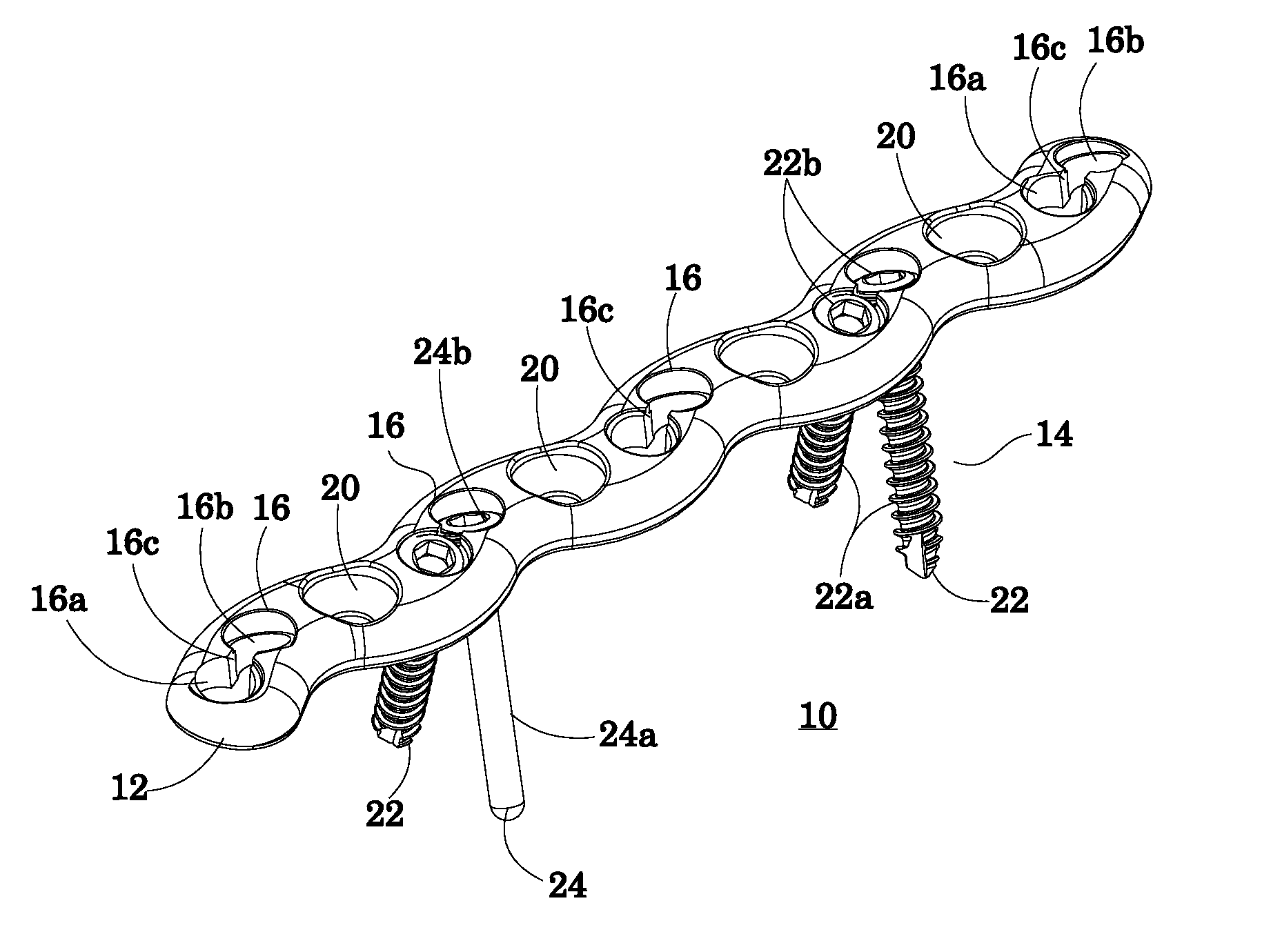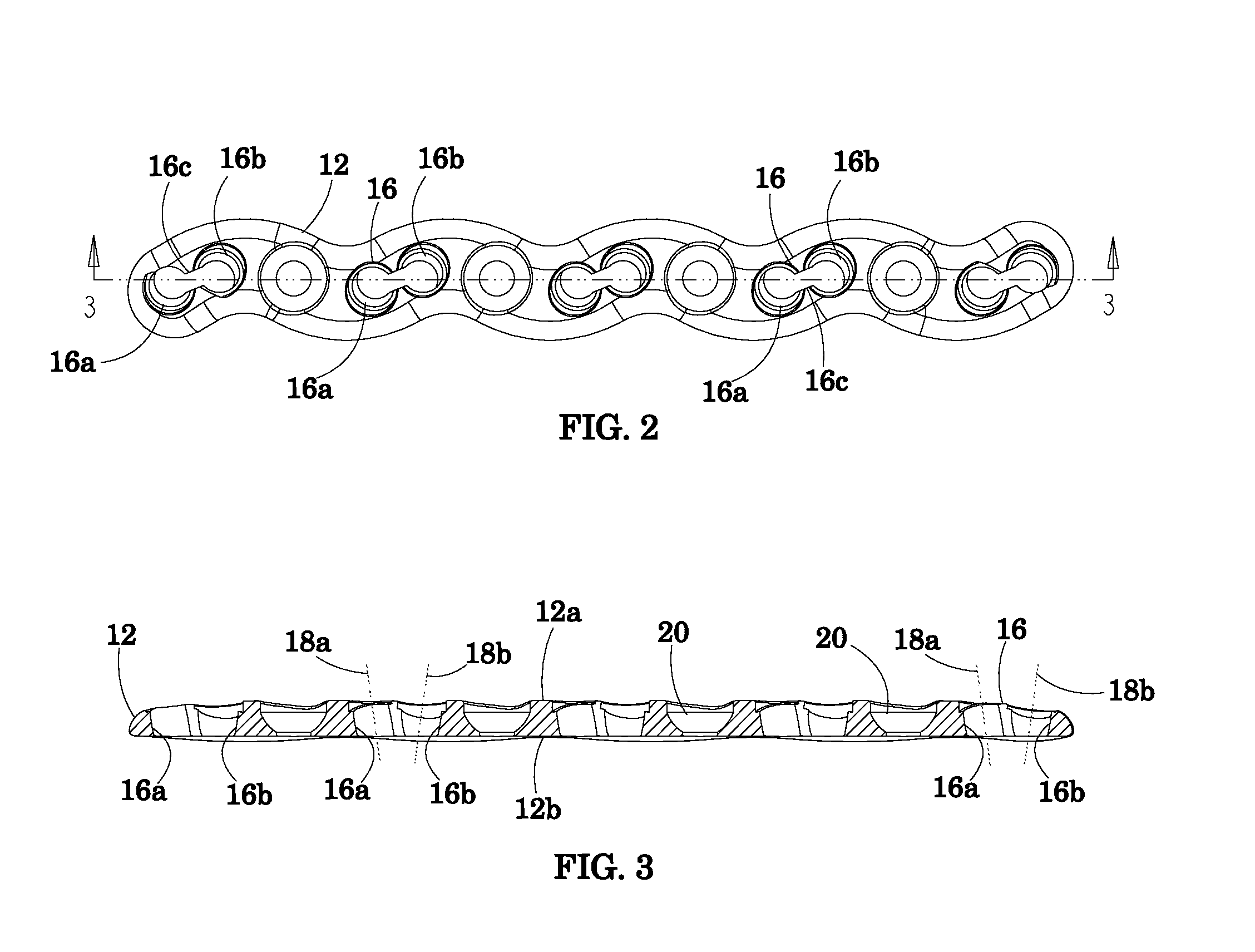Bone fixation system and method
a bone fixation system and bone technology, applied in the field of bone fixation system and bone fixation method, can solve the problems of one locking screw or non-locking screw, limited capacity of locking screw to compress bone fragments, and half of the screw hole may not be suitable for use, so as to improve the pull out strength of the plate, avoid undue retraction, and excellent anti-torsional characteristics
- Summary
- Abstract
- Description
- Claims
- Application Information
AI Technical Summary
Benefits of technology
Problems solved by technology
Method used
Image
Examples
Embodiment Construction
[0040]Referring to FIGS. 1-3 of the drawings, my bone fixation system shown generally at 10 comprises an elongated bone plate 12 made of a suitable rigid biocompatible metal such as titanium or stainless steel and a screw set indicated at 14, of a similar metal, for anchoring the bone plate to the bone to be fixated. The particular dimensions and shape of the bone plate 12 depend upon the size and shape of the bone and the length and dispersion of the bone fracture to be bridged by the plate.
[0041]Plate 12 has a first or upper surface 12a and a lower, bone-contacting surface 12b opposite surface 12a. Extending between those surfaces is a lengthwise series of spaced-apart combination holes or apertures 16 disposed along the longitudinal axis of plate 12. Each hole 16 has a predefined shape and size. More particularly, each hole 16 is composed of a pair of substantially circular domains 16a and 16b which are offset laterally from one another about the plate axis and may be interconnec...
PUM
 Login to View More
Login to View More Abstract
Description
Claims
Application Information
 Login to View More
Login to View More - R&D
- Intellectual Property
- Life Sciences
- Materials
- Tech Scout
- Unparalleled Data Quality
- Higher Quality Content
- 60% Fewer Hallucinations
Browse by: Latest US Patents, China's latest patents, Technical Efficacy Thesaurus, Application Domain, Technology Topic, Popular Technical Reports.
© 2025 PatSnap. All rights reserved.Legal|Privacy policy|Modern Slavery Act Transparency Statement|Sitemap|About US| Contact US: help@patsnap.com



